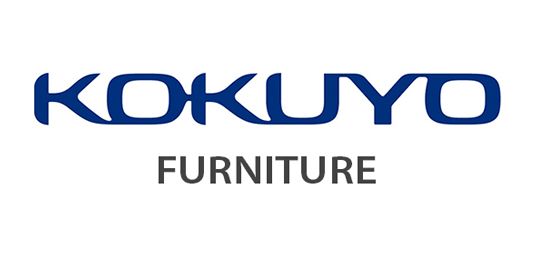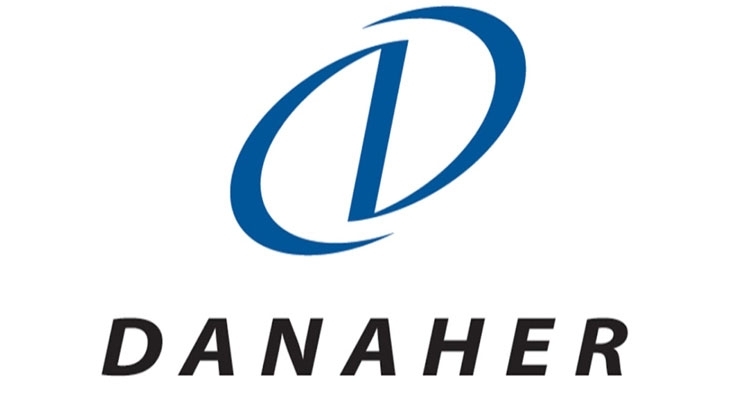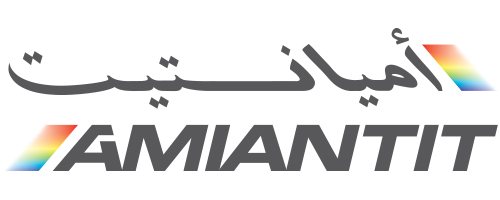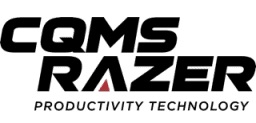Automotive Powertrain Electronics Market By Components (Engine Control Units (Ecus), Transmission Control Units (Tcus), Hybrid Electric Vehicle (HEV) Inverters); By Application (Powertrain Control, Safety And Security, Infotainment, Advanced Driver-Assistance Systems (ADAS), Telematics); By Connectivity (Wired, Wireless); By Propulsion Type (Internal Combustion Engines, Hybrid Electric, All-Electric Vehicles); By Fuel Type (Gasoline, Diesel); By Electric Vehicle Type (Battery Electric Vehicles (BEVs), Hybrid Electric Vehicles (HEVs), Plug-In Hybrid Electric Vehicles); By Vehicle Market (Passenger Cars, Light Commercial Vehicles, Heavy Commercial Vehicles); By Sales Channel Type (Original Equipment Manufacturers (OEMs), Aftermarket Players); By Region (North America, Europe, Asia Pacific, Latin America, Middle East & Africa) - Global Market Analysis, Trends, Opportunity and Forecast, 2022-2032
Automotive Powertrain Electronics Market Insights
The global Automotive Powertrain Electronics market size was valued at around USD 52.5 billion in 2022 and is projected to grow at a compound annual rate of growth (CAGR) of around 9.2% from 2022 to 2032.The market size is projected to succeed in USD 103.2 billion by 2032.
The electronic systems and components that are utilized during a vehicle's powertrain are mentioned as automotive powertrain electronics. The electronics within the powertrain are responsible for controlling and monitoring the varied components, which include the engine, transmission, and drivetrain. Sensors, actuators, controllers, and communication systems are all components of powertrain electronics. The engine and transmission operating conditions, like temperature, pressure, and speed, are detected by the sensors. The fuel injectors, throttle position, and valve timing are just a couple of the various parts that are controlled by the actuators.
The market alludes to the business that produces and sells electronic parts and frameworks to be used in car powertrains which includes sensors, actuators, regulators, and correspondence frameworks, also as related programming and administrations alongside control units (ECUs), transmission control units (TCUs), and mixture electric vehicle (HEV) inverters. From 2022 to 2032, As the demand for fuel-efficient and eco-friendly automobiles grows, so does the marketplace for automotive powertrain electronics.
Thanks to the high demand for fuel-efficient vehicles, the passenger car segment currently holds the most important market share. Thanks to the region's high auto production and sales, Asia-Pacific holds the most important market share. Due to their strict emissions regulations and growing use of electrical and hybrid technology, North America and Europe also are important markets. Automakers are struggling to develop powertrains that are capable of meeting these standards as governments implement stricter emissions regulations.
By optimizing the engine and transmission's operation, powertrain electronics are crucial to achieving these objectives. Bosch, Continental, Delphi Technologies, Denso, Hitachi Automotive, and ZF Friedrichshafen are among the main players within the global marketplace for automotive powertrain electronics.
Automotive Powertrain Electronics Market Key Drivers
The global automotive powertrain electronics market is driven by various factors contributing to its growth in recent years. Some of the key drivers of the are:
- Advancements in technology: The automotive powertrain electronics market is consistently evolving, with new technologies like the Internet of Things (IoT) and therefore the integration of Artificial intelligence (AI) being developed to enhance the efficiency and performance of powertrains.
- Government incentives & regulation: Government incentives and subsidies for electric and hybrid vehicles also are expected to drive the market. Increasingly strict government regulations on emissions and fuel efficiency are driving automakers to develop powertrains that are more efficient and produce lower emissions. Powertrain electronics play an important role in achieving these goals by optimizing the operation of the engine and transmission.
- Growing demand for fuel-efficient vehicles: Rising fuel prices and growing environmental concerns are leading consumers to demand more fuel-efficient vehicles. Powertrain electronics are essential to achieving higher fuel efficiency by optimizing engine and transmission operation.
- The trend of auto electrification: The trend of auto electrification is resulting in the event of the latest technologies, successively driving the marketplace for powertrain electronics.
- Increase in vehicle production: With the increasing number of vehicles being produced, the demand for powertrain electronics is additionally increasing.
- Focus on safety regulations: Government agencies like the US Environmental Protection Agency (EPA) and the National Highway Traffic Safety Administration (NHTSA) are introducing new regulations and standards to improve safety and drive demand for powertrain electronics.
- Increasing adoption of electrical and hybrid vehicles: The growing popularity of electrical and hybrid vehicles is additionally driving demand for powertrain electronics. These vehicles require sophisticated powertrain electronics to manage the interaction between the electric motor, battery, and combustion engine (in hybrid vehicles).
- Partnerships and collaborations: The market is characterized by partnerships and collaborations between companies to develop new technologies and products. this permits companies to share knowledge and resources and develop new products more quickly and efficiently.
Automotive Powertrain Electronics Market: Report Scope |
|
|
Base Year Market Size |
2021 |
|
Forecast Year Market Size |
2022-2032 |
|
CAGR Value |
9.2% |
|
Segmentation |
|
|
Challenges |
|
|
Growth Drivers |
|
Automotive Powertrain Electronics Market Key Trends and Developments
The global automotive powertrain electronics market is undergoing several key trends and developments, including:
- Electrification: Power electronics, like batteries, electric motors, and power electronics, are in high demand as a result of the increase in electric and hybrid vehicles. Thus, there has been a arrive venture and improvement in this area.
- Connectivity: The powertrain electronics market has also been suffering from the growing trend of connected cars. Advanced driver assistance systems (ADAS) and vehicle-to-vehicle (V2V) communication are two samples of more sophisticated and integrated systems that are required as a result of increased connectivity.
- Self Driving: The occasion of independent driving innovation has additionally determined the necessity for leading edge powertrain hardware, almost like sensors and control frameworks, to assist these frameworks.
- Demand from clients: Customer interest in further developed eco-friendliness, execution, and extravagance has likewise played an undertaking in driving the occasion of powertrain gadgets. Highlights like beginning stop frameworks, control modules, and high level transmissions are becoming more ordinary in present day vehicles.
Automotive Powertrain Electronics Market Segmentation
The automotive powertrain electronics market can be segmented based on the following factors:
- By Components
- Engine Control Units (Ecus)
- Transmission Control Units (Tcus)
- Hybrid Electric Vehicle (HEV) Inverters
- By Application
- Powertrain Control
- Safety And Security
- Infotainment
- Advanced Driver-Assistance Systems (ADAS)
- Telematics
- By Connectivity
- Wired
- Wireless
- By Propulsion Type
- Internal Combustion Engines
- Hybrid Electric
- All-Electric Vehicles
- By Fuel Type
- Gasoline
- Diesel
- By Electric Vehicle Type
- Battery Electric Vehicles (BEVs)
- Hybrid Electric Vehicles (HEVs)
- Plug-In Hybrid Electric Vehicles
- By Vehicle Market
- Passenger Cars
- Light Commercial Vehicles
- Heavy Commercial Vehicles
- By Sales Channel Type
- Original Equipment Manufacturers (OEMs)
- Aftermarket Players
- By Region
- North America
- Europe
- Asia-Pacific
- Rest of the World (RoW)
Automotive Powertrain Electronics Regional Synopsis
The North American automotive powertrain electronics market is prognosticated to grow at a big rate during the cast period (2021- 2026) driven by the added demand for energy-effective vehicles, growing mindfulness about vehicle safety, and strict regulations regarding emissions. The market size was estimated to be valued at $12.4 billion in 2020, with a CAGR of 6.5% from 2021 to 2026. The European automotive powertrain electronics market is driven by the added demand for mongrel and electric vehicles, a growing specialization in reducing emissions, and strict regulations regarding vehicle safety. The market size in Europe is estimated to be valued at $14.2 billion in 2020, with a CAGR of 5.8% from 2021 to 2026.
The Asia Pacific automotive powertrain electronics market is estimated to grow at a big rate. It is estimated to be valued at $18.9 billion in 2020, with a CAGR of 8.2% from 2021 to 2026. The market is driven by the adding demand for vehicles, growing to specialize in reducing emissions and adding investments within the automotive industry.
The Rest of the World’s automotive powertrain electronics market is prognosticated to grow at a moderate rate driven by the adding demand for vehicles, growing to specialize in reducing emissions and adding investments within the automotive assiduity. The market size within the remainder of the earth is estimated to be valued at $4.6 billion in 2020, with a CAGR of 4.3% from 2021 to 2026.
Japan Automotive Powertrain Electronics Market
The Japan automotive powertrain electronics market is predicted to experience a gentle rate of growth within the coming years, with a compound annual rate of growth (CAGR) of around 6% between 2021 and 2026. The market size was valued at $12.43 billion in 2021 and is projected to succeed at $16.73 billion by 2026. The market is driven by factors like the increasing demand for high-performance vehicles, rising concerns over fuel efficiency and emission reduction, and therefore the growing adoption of advanced technologies like AI and IoT within the automotive industry.
Some of the key players within the Japan automotive powertrain electronics market include Aisin Seiki Co., Ltd., Denso Corporation, Hitachi Automotive Systems, Ltd., Mitsubishi Electric Corporation, Panasonic Corporation, Robert Bosch GmbH, Continental AG, and Delphi Automotive PLC. These companies are focusing on expanding their product portfolios and increasing their R&D investments to develop advanced powertrain electronics systems and components that are more efficient, reliable, and eco-friendly.
Automotive Powertrain Electronics Market Key Challenges
The automotive powertrain electronics market faces several key challenges that could potentially impact market growth and profitability. Some of the key challenges include:
- Changing consumer preferences: With the increasing demand for electric and hybrid vehicles, there's a shift in consumer preferences towards more eco-friendly vehicles. Companies got to adapt to those changing preferences and develop products that cater to plug demand.
- Cost pressure: Because the competition within the market increases, there's constant pressure to scale back the value of powertrain electronics. Companies got to find ways to scale back costs without compromising on the standard of their products.
- Cybersecurity concerns: As more and more vehicles become connected, cybersecurity concerns are getting increasingly important. Hackers could potentially gain access to a vehicle's powertrain control systems, posing a risk to both the vehicle and its occupants.
- High costs: The event and production of powertrain electronics are often costly, making it difficult for smaller companies to enter the market.
- Increasing complexity: With the increasing complexity of powertrain electronics, it's becoming challenging to style and develop systems that meet stringent safety and environmental regulations.
- Integration and compatibility: Integrating powertrain electronics with other vehicle systems like ADAS, and infotainment is often a challenge.
- Lack of standardization: There's a scarcity of standardization within the powertrain industry, which may make it difficult for manufacturers to develop products that are compatible with a good range of vehicles.
- Limited battery life: Electric and hybrid vehicles have limited battery life, which may be a challenge for manufacturers to beat.
- Limited charging infrastructure: The limited availability of charging infrastructure for electric vehicles may be a barrier to the expansion of this market.
- Limited range of electrical vehicles: The limited range of electric vehicles may be a challenge for the market because it limits the number of consumers who will consider buying them.
- Supply chain disruptions: The automotive industry is very hooked on global supply chains, and any disruption can have a big impact on the supply of components and raw materials.
- Technological obsolescence: With new technologies emerging frequently, companies got to continuously update their products to stay competitive. It is often difficult for smaller players to stay up with the pace of innovation.
Automotive Powertrain Electronics Market Global Key Players
The global automotive powertrain electronics market is highly competitive, with several key players operating in the market. These companies have a global presence and are constantly innovating to keep up with the rapidly evolving automotive powertrain electronics industry. Some of the major players in the market include:
NXP Semiconductors, Robert Bosch GmbH, Texas Instruments Incorporated, ZF Friedrichshafen AG are some other major players with a wide range of products including engine control units (ECUs), transmission control units (TCUs), and hybrid electric vehicle (HEV) inverters.

Need Customized Report for Your Business ?
Utilize the Power of Customized Research Aligned with Your Business Goals
Request for Customized Report- Quick Contact -
- ISO Certified Logo -

















